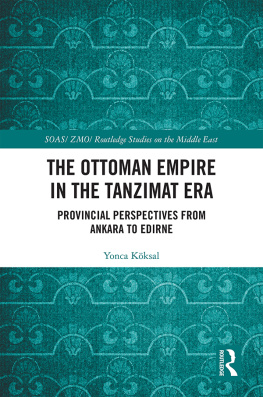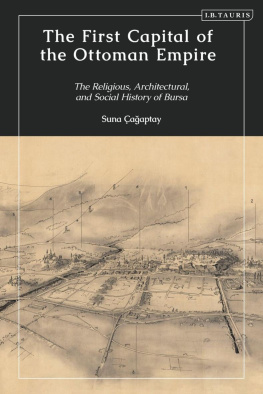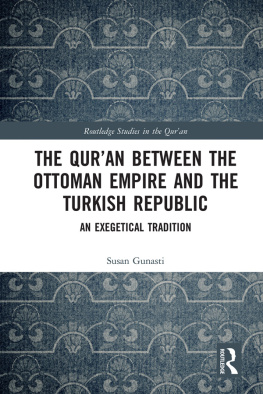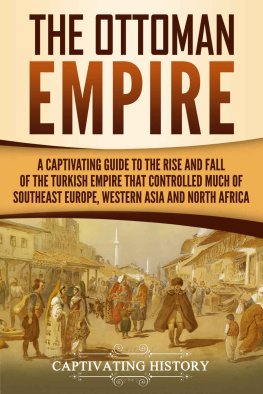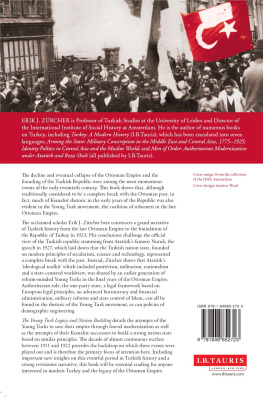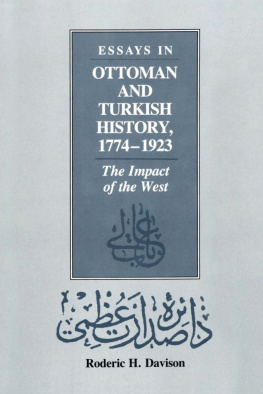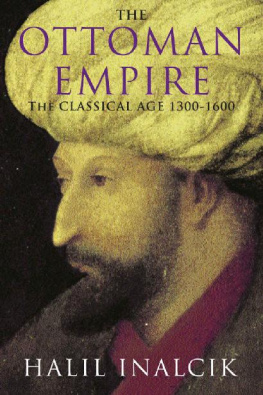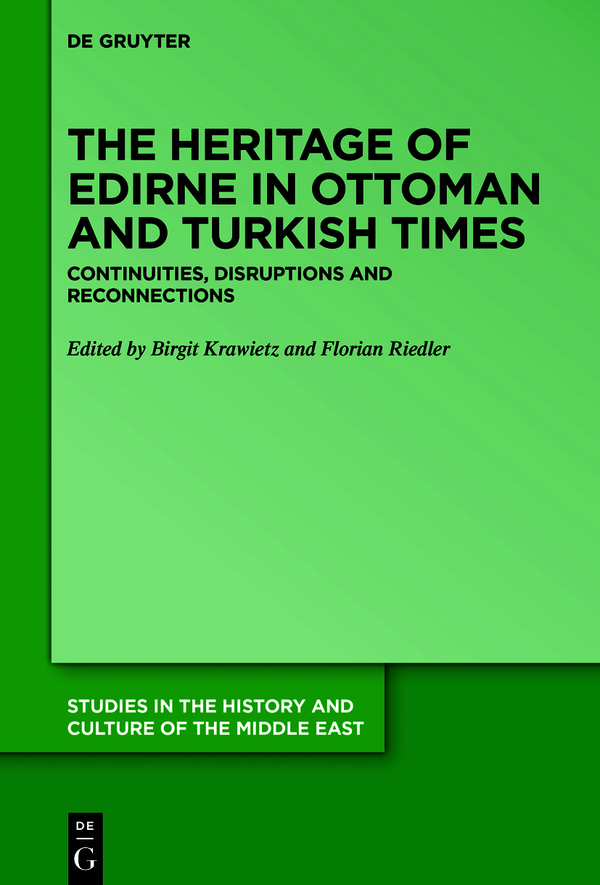Studies in the History and Culture of the Middle East
Edited by
Stefan Heidemann
Gottfried Hagen
Andreas Kaplony
Rudi Matthee
Volume
ISBN 9783110634136
e-ISBN (PDF) 9783110639087
e-ISBN (EPUB) 9783110635157
Bibliographic information published by the Deutsche Nationalbibliothek
The Deutsche Nationalbibliothek lists this publication in the Deutsche Nationalbibliografie; detailed bibliographic data are available on the Internet at http://dnb.dnb.de.
2020 Walter de Gruyter GmbH, Berlin/Boston
Foreword
Personal Recollections of Field Research in Edirne in the 1970s
Thank you for the opportunity to remember my early work in Edirne and on Edirne. If I am not very much mistaken, you dug out my unpretentious dissertation on Evliya elebis account of Edirne with the aim of illustrating the dramatic progress in Ottoman Studies after a half century. (Not alone the layout: my thesis was written on an Olympia typewriter with a Turkish keyboard lacking the German ). Indeed, I cannot deny the fields development in terms of the diversification of topics, analytical penetration, and exploitation of new sources.
Such a great amount of scholarship is at the same time impressive and discouraging. For our age group a doctoral thesis in Oriental Studies was not necessarily connected with a specific research question. Candidates had to prove their ability to understand a text preferably by editing, translating, and annotating it with the classical instruments of philology. We had the privilege to study nearly without rules and regulations, no intermediate examination, no credit points. There were only two ways to finish the university: to drop out without a degree or to obtain a doctorate.
My decision to write about Edirne was purely pragmatic at the end of a rather chaotic studium generale interrupted by many trips and journeys to the Middle East and focusing more and more on archaeology and Islamic art. Hans Joachim Kiling, I was forced to switch to Evliya, but stuck to my focus on Edirne, an important place, but within reasonable and manageable limits.
Kiling was influenced by Georg Jacob
My teacher Kiling had access to two or three dozen languages, but advocated realia in contrast to bloodless linguistics. He turned his focus to mystical brotherhoods not exclusively in the Ottoman centuries but also in contemporary Yugoslavia where authorities were less biased against a project of film documentaries of dervish life. As everybody knows, in Turkey until the early eighties nearly all sorts of research into living forms of unofficial Islam were dismissed.
I started my research with the innocent conviction that I was the first scholar outside Turkey to follow in the footsteps of the art historian Cornelius Gurlitt
Since Kiling did not insist on archival research in Istanbul (Gkbilgins edition of primary sources was already published), I decided not only to compare the different versions of the Seyahatname, but also to look at as many Eastern and Western sources as possible. The main obstacles were the bureaucratic stumbling blocks in Istanbul. The policies of the great manuscript collections were in theory based on an exchange system: they gave you a microfilm as a return favor for a microfilm from the libraries in Germany needed by a Turkish scholar. This was a reasonable quid pro quo, but did unfortunately not work smoothly in practice. Quite a few colleagues knew that the photographer of Sleymaniye library was not insensible to some tebdil-i nezaket. Through an exchange of niceties, some of us obtained a meter or two of the fervently longed-for Kodak or Agfa negatives.
Since I was unable to get a film of a fair copy of Badi Ahmed Efendi protected jealously by the director of the Bayezid library, I went to Edirne, where, in the person of Latif Baman (19192007), the director of the l Halk Ktphanesi, I met an unbiased and helpful local patriot (though born in Uzunkpr). He showed understanding for my research and allowed me to take a couple of pictures of Badi Efendis msvedde (draft ms.) preserved in the former Selimiye library. I was, admittedly, too shy to seek the advice of Prof. Sheyl nver. The distinguished ordinarys was the living authority on Adrianopolitana. I do not remember why I kept my distance from his archive preserved in the Tp Tarihi Enstits. Years later, I began to understand the language of his generation, which mourned the loss of a cityscape.
The perception of Edirne in the late 1960s as a garrison town in a problematic border position changed rapidly when migrant workers returned for their summer vacation from Germany, creating an Alman Pazar along the through road. Gradually, normal life returned to the town. The somewhat sleepy image was a contrast to the more dynamic development of the other two provincial centers in Thrace, Tekirda, and Krklareli. During my first journeys to Turkey five and four years earlier (1964 and again in 1965) coming from Austria, I had only seen the railway station of Karaaa. Traveling by train from Istanbul in the late sixties I was surprised to be the only passenger on the last section between Uzunkpr and Karaaa, crossing the projection of Greek territory. There was no noticeable border traffic between Turkey and Greece and one had the impression that the Turkish workers coming by car from Germany hastened to leave the glorious frontier town (serhad ehri) behind. Considering that Bulgaria was a member of the Warsaw Pact, the relations with this neighbor (komu) were relaxed in these days. I witnessed one evening how the Turkish border guards organized dinner parties for their Bulgarian comrades in the Kervan Oteli (Talt Paa Asfalt), where I used to stay. The geostrategic situation restricted excursions in the close vicinity. The soldiers refused admittance to the Hzrlk tepesi, which rose to fame as the headquarters of kr Pasha when Edirne was under siege in the Balkan War. For me, Hzrlk had a completely different meaning as the site of a Bektai convent whose fate I described on ten pages in my dissertation.
The general situation was characterized by serious disturbances in Istanbul. The Bloody Sunday (Kanl Pazar, 16 February 1970) on the occasion of the visit of the US 6th fleet ended with many victims after leftist demonstrations. In June, a state of emergency was declared after demonstrations of workers joined by students in the cities of Istanbul and Izmir. The political polarization culminated between the youth organizations of the ultra-right National Movement Party of Alparslan Trke (MHP), and the National Salvation Party (MSP) founded by Necmettin Erbakan. Instead of long-winded expositions, let me exemplify the climate with some lines from the letter of a Turkish friend (Erturul Beygo), written on 1 May 1970: Universities were closed since 1 April until 4 May. The reason: a couple of persons had been killed
In contrast to this disastrous picture of Istanbul, Edirne kept quiet. The only higher educational institutions were the Teacher Training Colleges, surrounded by barracks and parade grounds. It was at least for me difficult to get in touch with educated inhabitants. There was no serious bookstore or sahhaf as a meeting place of literati. I remember only a small place in the Bedesten whose supply was as poor as the demand.
When I arrived in summer 1974 to verify some details before publishing the book, long military convoys headed for Edirne. We happened to travel in Eastern Thrace a couple of days after the Turkish landing in Cyprus. At the same time a mosquito plague of biblical dimensions gave us a hard time, since the soldiers had completely confiscated the stocks of ointments against the beasts.


